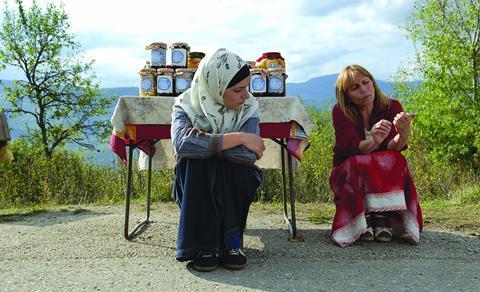
The six territories formed after the break-up of Yugoslavia still face plenty of challenges in terms of film distribution and exhibition, but Vladan Petkovic sees signs of optimism on the eve of the Sarajevo Film Festival in Bosnia (Aug 12-20).
The most popular theatrical titles in the six states that once made up Yugoslavia are, as everywhere else, Hollywood titles. Ice Age: Dawn Of The Dinosaurs is top of the charts in Croatia, Serbia and Slovenia at time of going to press, while Brüno, The Hangover and Transformers: Revenge Of The Fallen have all been big hits.
Slovenia is the smallest but best developed of the territories, the only one that avoided the war and at the moment the only EU member state among them.
The region, however, is not easy to navigate in distribution terms. When the six states were part of Yugoslavia, they formed a valuable market for Hollywood studios and independent sales agents alike. The territory had 22 million inhabitants, theatres in every town and a solid supply of US product. But when it fell apart in 1992 in a war which finally ended in 1995, the small territories that eventually emerged had too many problems to prioritise cinema-going or piracy.
Slovenia is the smallest but best developed of the territories, the only one that avoided the war and at the moment the only EU member state among them. It has six multiplexes and 110 screens for its 2 million inhabitants as well as one of the lowest piracy levels in Europe. But the other territories are less organised.
Croatia has the most screens (121) and attendance (a total of 3.2 million admissions in 2008) for its population of 4.5 million. Serbia and Montenegro together used to be the biggest market with 8 million citizens, but rampant piracy, the bankruptcy of the leading exhibitor in 2007 and the painfully slow development of the exhibition arena has brought the theatrical business to its knees. It has only 98 screens at present, while the only distributors that have survived either have contracts with US studios or buy for the whole region.
Bosnia and Herzegovina has only seven screens (although two multiplexes are scheduled to open by the end of the year) and it is almost impossible to get box-office data, with US studios often combining their figures with Serbian or Croatian numbers. Macedonia has only three independent distributors, while the majors sub-distribute via their Serbian partners.
But the region is picking up pace. Unlike other western European territories, the fast proliferating TV market is proving a big buyer for films, and VoD is starting to develop rapidly. “TV rights are very lucrative, with seven national and 28 regional and local TV stations in Serbia which need to fill their schedules with quality programmes,” says Ivan Hiniv, head of HE and TV distribution at leading Serbian distributor Tuck.
While the majors are still significantly undermined by DVD piracy, independent and European movies seem so far to have avoided that blight. “Our customers for the independent titles are staying loyal,” says Igor Stankovic, CEO of Belgrade’s MCF which bought titles such as The White Ribbon and Antichrist in Cannes for Serbia, Bosnia and Macedonia.
European titles have a hard time getting into theatres, but festivals such as this month’s Sarajevo, Croatia’s Motovun and Zagreb, and Serbia’s Palic and Belgrade play an important role. “Usually international titles acquired for the former Yugoslavia region by one of the seven independent buyers end up licensed to sub-distributors and released in all the territories after the festival,” says Jovan Marjanovic, head of Sarajevo’s industry section, CineLink. “The latest example is Storm by Hans-Christian Schmid, which will open in Zagreb and Belgrade after the festival premiere.”
Locally produced films are proving increasingly popular. In 2008, Tears For Sale in Serbia, Snow in Bosnia and Shadows in Macedonia were all the highest grossers. It is much harder to pirate local titles as producers pull out all the stops to prevent it. Street sales of illegal DVDs are non-existent in Slovenia, have been reduced to a minimum in Croatia and are slowly decreasing in Serbia. Bosnia has always been the territory in which anything could be bought on the street, but it is reported the law has been enforced more aggressively in recent months.
Locally produced films are proving increasingly popular. In 2008, Tears For Sale in Serbia, Snow in Bosnia and Shadows in Macedonia were all the highest grossers.
Meanwhile, 3D screens are appearing in the region. Slovenia’s Kolosej opened its first in Ljubljana in 2007, and now has nine, all of which are doing well. In March this year, Kolosej opened an 11-screen multiplex in Belgrade and its 3D screen is proving very popular. Ice Age: Dawn Of The Dinosaurs opened in Serbia on July 1 with 11,565 admissions from nine prints for the weekend — 3,600 of which came from the one 3D print.
“For the first time since 2003, attendance in Serbia in 2008 was stable instead of declining,” says Danijela Milosevic, head of distribution at Belgrade’s Taramount which distributes Universal and Paramount films in Serbia and Bosnia and WDI in Serbia and Macedonia.
“The first quarter of 2009 saw an 18% rise compared to the same period in 2008. Now it’s declining but summer is traditionally a dead theatrical season in the region and we hope that in the autumn, with the opening of the Sarajevo multiplex, we’ll attract some new audiences.”
Once the region has its share of multiplexes, the former Yugoslavia could again become a market to reckon with.






![The Brightest SunScreen[Courtesy HKIFF]](https://d1nslcd7m2225b.cloudfront.net/Pictures/274x183/3/5/0/1448350_thebrightestsunscreencourtesyhkiff_312678.jpg)















No comments yet